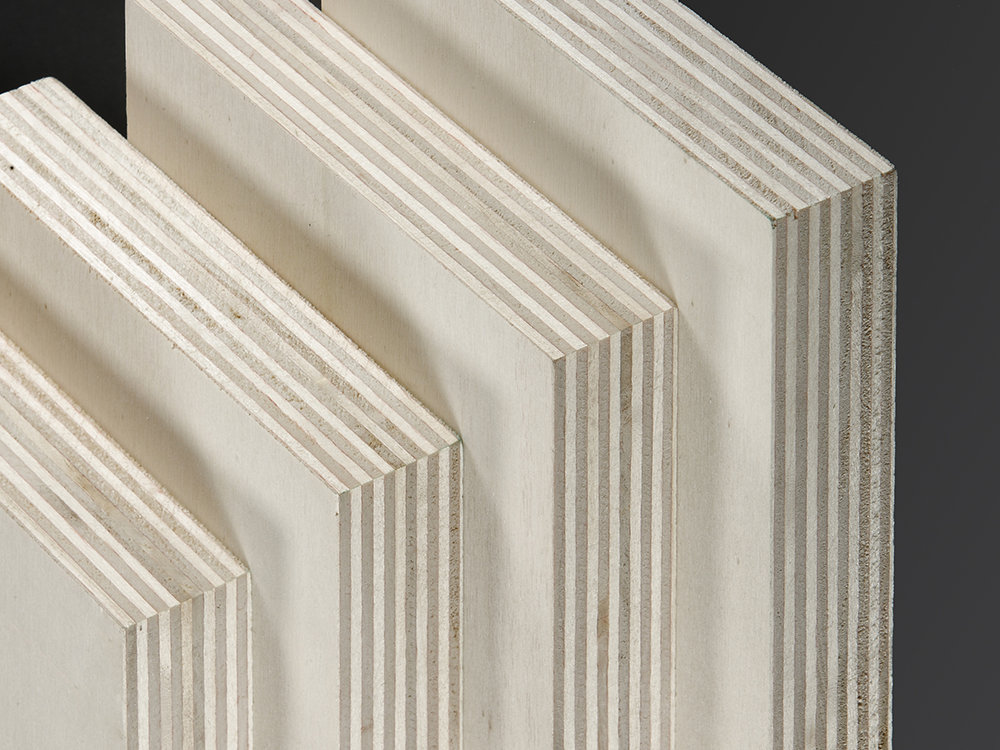
Plywood has long been valued for its dimensional stability and strength-to-weight ratio. However, while it has historically been utilised primarily for utilitarian means such as concrete formwork or the subsurface of veneer, the ever-improving quality of plywood has in recent times paved the way for its specification in a variety of other roles. Its enhanced appearance and versatility now means that plywood is suitable for use in interior applications, be they structural or aesthetic.
This shift has unfortunately brought about two major consequences, both of which limit the potential environmental and practical benefits of plywood: firstly, the higher demand for the timbers used in plywood has resulted in some intensive deforestation, particularly in tropical regions. The consequences of this are manifold: deforestation threatens traditional populations’ ways of life and the natural conditions and habitats of native flora and fauna, as well as harming the economic and social livelihoods of those who depend on legal forestry. Furthermore, the destruction of tropical forests also limits their potential to act as a carbon sink, accelerating the negative impacts of climate change.
The second consequence of plywood’s increased uptake, occurring further down the manufacturing process, is the common use of urea formaldehyde or phenolic glues in binding each ply to the next. As known VOCs prone to off gassing, this presents particular health problems – specifically when used in an indoor context. While low concentrations of formaldehyde are unlikely to cause acute symptoms in building occupants, particularly if a space is ventilated properly, studies have shown that even small amounts (less than 0.05 parts per million, or ppm) might exacerbate other conditions such as allergies, chronic irritations, or cancer.

Tackling these two problems presents more of a challenge considering their occurrence at opposite ends of the manufacturing processes – typically involving more stakeholders and making chain of custody more difficult to track.
Elton Group’s EPly PanguaPureGlue was developed in response to both of these issues. As a plywood with No Added Formaldehyde (NAF), PanguaPureGlue significantly reduces VOC off-gassing with an innovative, non-toxic, soy based bonding system. While even Ultra-low Emitting Formaldehyde (ULEF) based panels nonetheless feature formaldehyde emissions up to 0.030 ppm, PanguaPureGlue improves upon that number by over 7 times, with the certified number lying below 0.004 ppm – no more than what exists naturally in the wood itself. Both factory workers and end-use building occupants can breathe easy, without any risk of inhaling toxic fumes.
Panguaneta also produces PanguaPureGlue from their own FSC certified plantation-grown timber, ensuring the long-term health of the land upon which it is grown and guaranteed transparency regarding chain of custody.
Produced using fast growing poplar wood, PanguaPureGlue is, on average, half the weight of MDF and the lightest out of Birch, Pine or Hoop-based plywood, making it easier to transport and manipulate. Available in multiple sizes and thicknesses and featuring a Class 1 face grade, PanguaPureGlue is suitable for the highest quality wall and ceiling linings, joinery or furniture – without toxic fumes or doubts about sustainability.
For more information about Elton Group and Eply PanguaPureGlue, visit the link below:
http://eltongroup.com/panguapureglue/.

